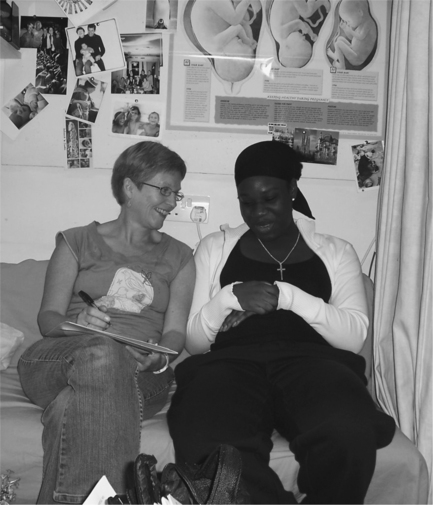10 Midwifery continuity of care for specific communities 
Introduction
The evidence presented in Chapter 2 demonstrates that women benefit from midwifery continuity of care and argues that this has implications in terms of access and equity. The benefits of continuity of care are often social, psychological and emotional, as well as physical. It seems likely, therefore, that women who are socially isolated, or from marginalised and vulnerable communities, will particularly benefit from this type of care. This chapter provides a number of vignettes or short stories of examples of how midwifery continuity of care can be designed to meet the needs of these specific groups of women. We also focus on stories from midwives who work with Indigenous communities and those who practise in rural or remote settings.
Midwifery continuity of care as primary health care
This chapter explicitly highlights some examples of midwifery as a public health strategy and the value of a primary health care approach. Primary health care is often misunderstood as only referring to care in the community or care for healthy, low risk women. We believe that midwifery continuity of care is fundamentally about primary health care, regardless of location or target group (Brodie 2003).
As we explained in the Introduction, we believe that primary health care is one of the fundamental underpinnings of midwifery continuity of care. The Australian Competency Standards for the Midwife (ANMC 2006) have primary health care as one of four essential domains, again highlighting the importance of this. Box 1 explains how we see midwifery continuity of care can fulfil primary health care principles and is adapted from the Australian Competency Standards for the Midwife (ANMC 2006).
Aboriginal Birthing Program in South Australia
Anne Nixon starts the story. Anne is the Midwife and Coordinator of the ‘Improving Aboriginal and Torres Strait Islander Birthing Outcomes Project’, Aboriginal Health Division, South Australia. Anne is also a co-author of Chapter 6.
Box 2 Family Anangu Bibi Birthing Program in SA
Cheryl Boles is the midwife who works in the model with Deanna. She says:
The principles so well described in this vignette include partnership, primary health care, and community engagement and access.
Working with Indigenous women in remote Australia
Box 3 An example of midwifery continuity of care in remote Australia
Over the last 40 years across remote Australia, women have increasingly been relocated from their homes to give birth in regional centres. Typically, they will leave their homes at 36–38 weeks gestation to await birth, usually alone, in the regional setting. Women state they do not like to be away from their families for weeks at a time as worrying about the children left behind and other family members causes immense stress (Biluru Butji Binnilutlum Medical Service 1998, Fitzpatrick 1995, Hirst 2005, Kildea 1999). Many remote areas no longer have the infrastructure, staff or insurance cover to support on-site birthing. These policies are driven by a belief that birth in remote areas is too ‘risky’. Important contributors to a positive experience of maternity care are often lacking in this model, namely: continuity of care, choice of care and place of birth and the right to maintain control (Homer et al. 2001). It is clear that the model of care is not socially or culturally acceptable to women and their families, nor is it satisfying for the health care providers (Biluru Butji Binnilutlum Medical Service 1998, Carter et al. 1987, Fitzpatrick 1993, Kildea 1999, 2006, NSW Health 1998).
Stay updated, free articles. Join our Telegram channel

Full access? Get Clinical Tree


